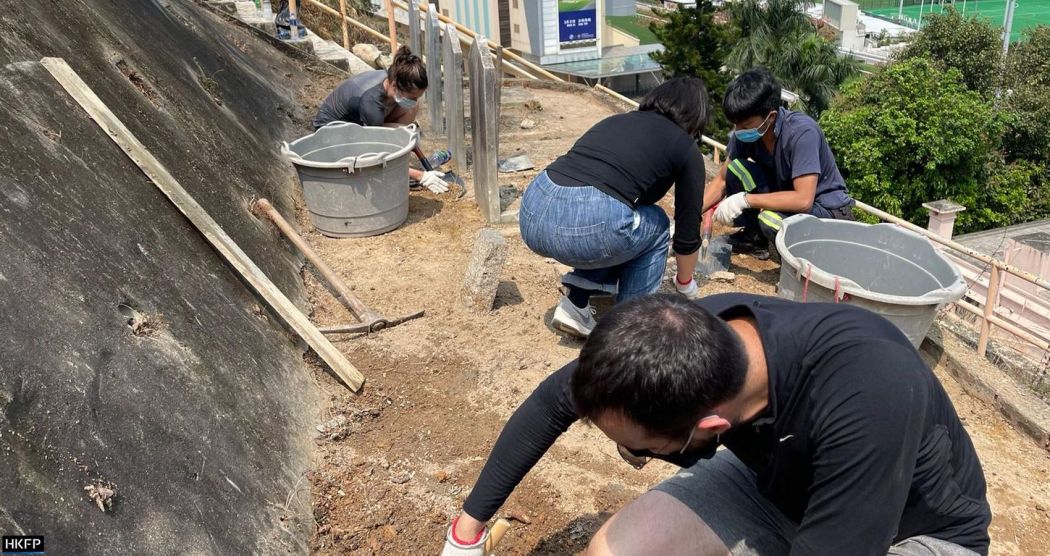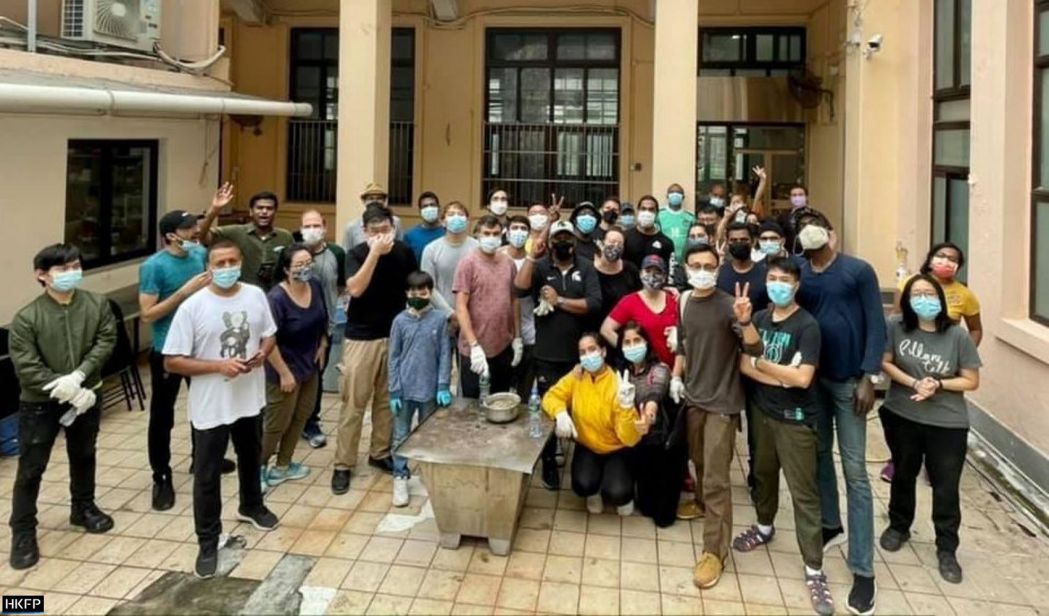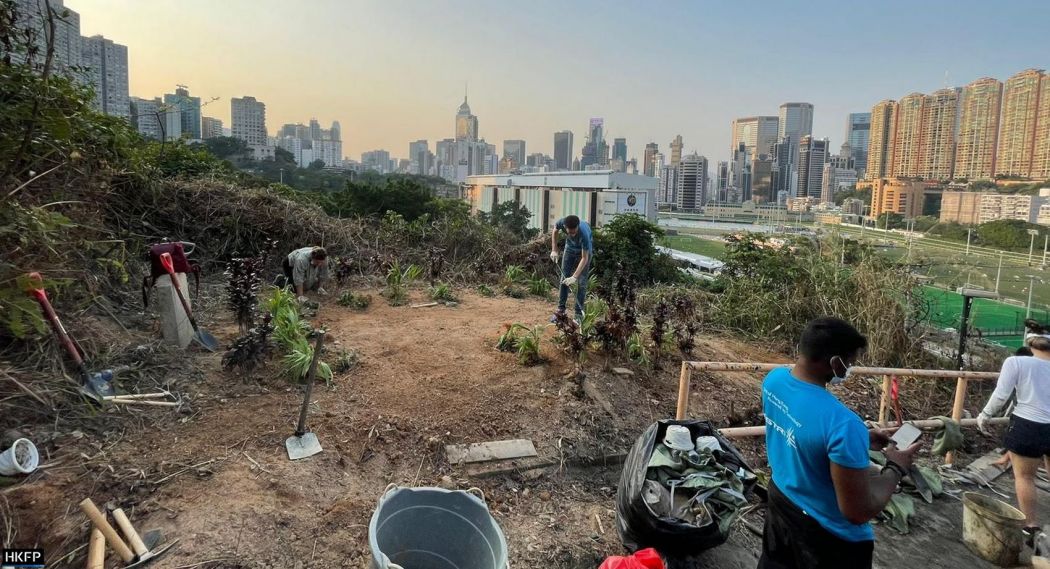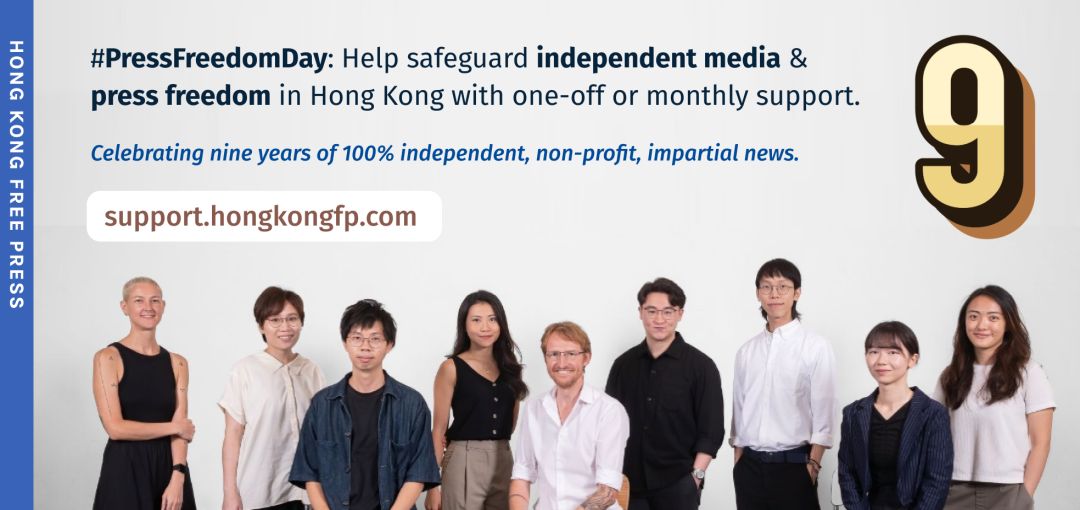For decades, the Hindu cemetery in Happy Valley, tucked behind the community’s large temple on Wong Nai Chung Road, had fallen into disrepair. Overgrown vegetation and dirt engulfed almost all the gravestones, some of which had come loose and sunk into the mud from years of erosion. The cemetery’s war memorial, honouring Indian soldiers who fought in the First World War, seemed forgotten amid the chaos.

“A memorial like this is a way for us to educate society about our history and culture… We have done, and will continue to do so much for Hong Kong.”
jeffrey andrews
But for three Saturdays in a row, more than 100 community members showed up to clean, repair and restore all of the 30 graves on the site.
Led by social worker Jeffrey Andrews and barrister Azan Marwah, this initiative is the first of its kind, and came to fruition after Marwah noticed the memorial’s decrepit condition last November. He contacted Andrews, who then appealed to members of the public to volunteer their time at the site.

“When Azan told me about the condition of the cemetery, and I saw it for myself, I knew we had to do something,” Andrews told HKFP. “We need a respectable site to remember our fallen soldiers and members of our community. We want to give some dignity back to these graves.”

And so every Saturday, a group of volunteers diligently showed up at 10am to begin their mission. They painstakingly dug through the tough soil, mixed cement, and carried flower pots and buckets of heavy sand up the steep steps to the cemetery. And at the end of their shift, volunteers were rewarded with a meal of lentils, rice and vegetables, prepared by the Hindu temple’s cook.

There are five cemeteries in Happy Valley, catering for the Christian, Parsi, Muslim, Jewish and Hindu communities. The oldest dates back to 1845.
Funeral rites for the dead among Hindus usually revolve around cremation, but children are buried. With no burials for years, the upkeep of the cemetery, according to a staff member at the Hindu Temple, had been forgotten about.

“The turnout has been incredible,” said Andrews. “We never expected it to get so huge. Seeing people from all walks of life and ethnicities turn up has been so humbling.”
The Hindu Temple priest, Deepak Sharma, said he had never seen anything like it.

“People from all walks of life are welcome here,” said Sharma. “We love having visitors and we hope to see more faces once the restoration is complete.”
Ethnic minorities have an illustrious history in the city, dating back to colonial rule. Some of the buyers in Hong Kong’s first land auction in 1841 were Parsi merchants. Sikh and Nepalese soldiers fought alongside the British during the First and Second World Wars.

However despite this, minority groups have long battled feelings of isolation from the larger Chinese community, including a lack of language-learning support in schools, discrimination and racial profiling.
Some South Asians reported an uptick in discrimination following suggestions by a senior health official in January that ethnic minorities were engaging in “behaviour that put them at risk” of contracting Covid-19.
American Erica Stein volunteered for two out of the three weekends to “give back to the city” and “learn about the many communities that co-exist in Hong Kong.”
“The experience taught me more about the history of our city, the Hindu religion and community here,” said Stein. “Also just spending time carrying and laying cement alongside people diverse in race, ethnicity, age, religion, was powerful.”
Stein, who lost her veteran grandfather last July, was unable to travel to the United States for his funeral.

“It was the first time I had physically been in a cemetery since his passing,” she said. “It was a cathartic experience to be able to also channel my personal grief in a way that he would’ve loved hearing about.”
Filipino-Chinese Dr. Michael B.C. Rivera, volunteered three Saturdays in a row. He drew upon his expertise as an archaeologist to guide volunteers on the restoration process.
“It was also such a moving experience to give these graves new life,” said Rivera. “It made me realise that all our history is intertwined, and this is a perfect example to showcase that. Hong Kong is going through such a difficult period at the minute. Efforts like these, which bring people together, is what makes Hong Kong people resilient.”
“A memorial like this is a way for us to educate society about our history and culture,” said Andrews. “We have done, and will continue to do so much for Hong Kong.”
Support HKFP | Policies & Ethics | Error/typo? | Contact Us | Newsletter | Transparency & Annual Report | Apps
Help safeguard press freedom & keep HKFP free for all readers by supporting our team

LATEST FROM HKFP
HKFP has an impartial stance, transparent funding, and balanced coverage guided by an Ethics Code and Corrections Policy.
Support press freedom & help us surpass 1,000 monthly Patrons: 100% independent, governed by an ethics code & not-for-profit.










